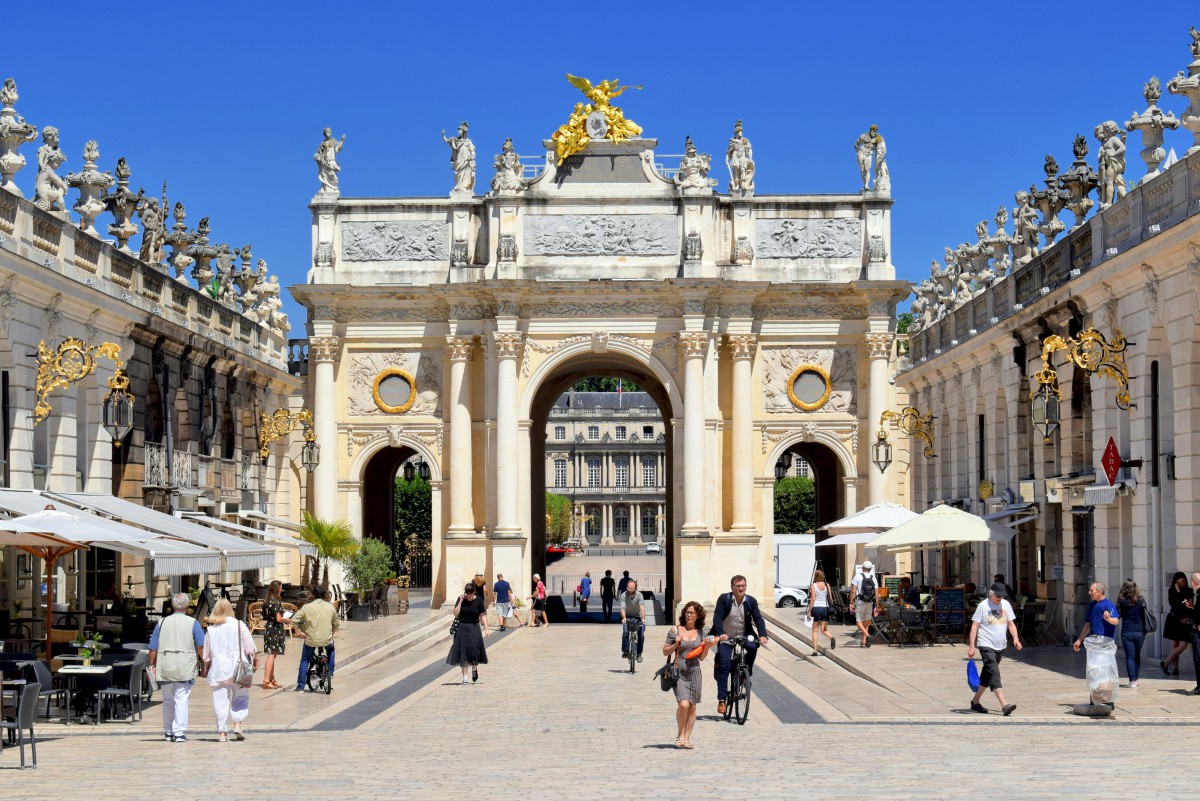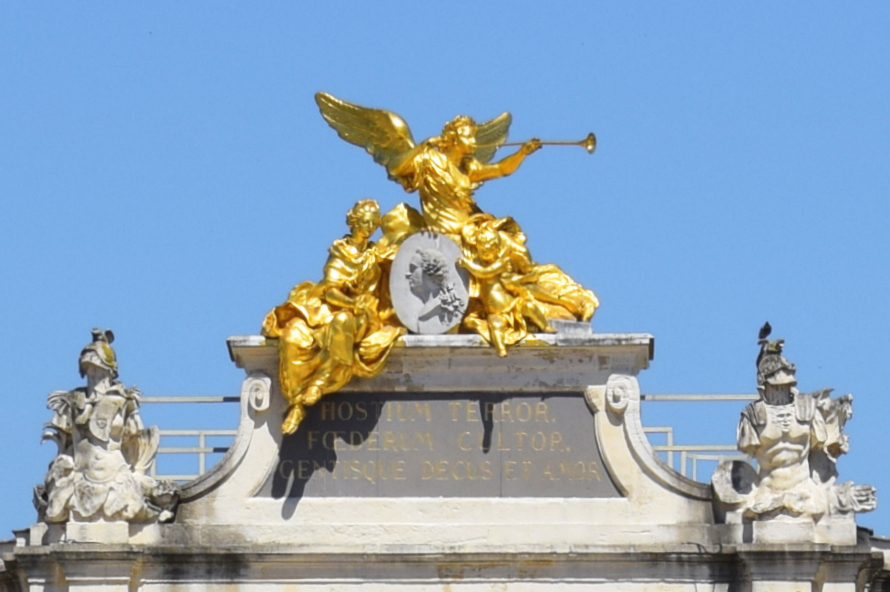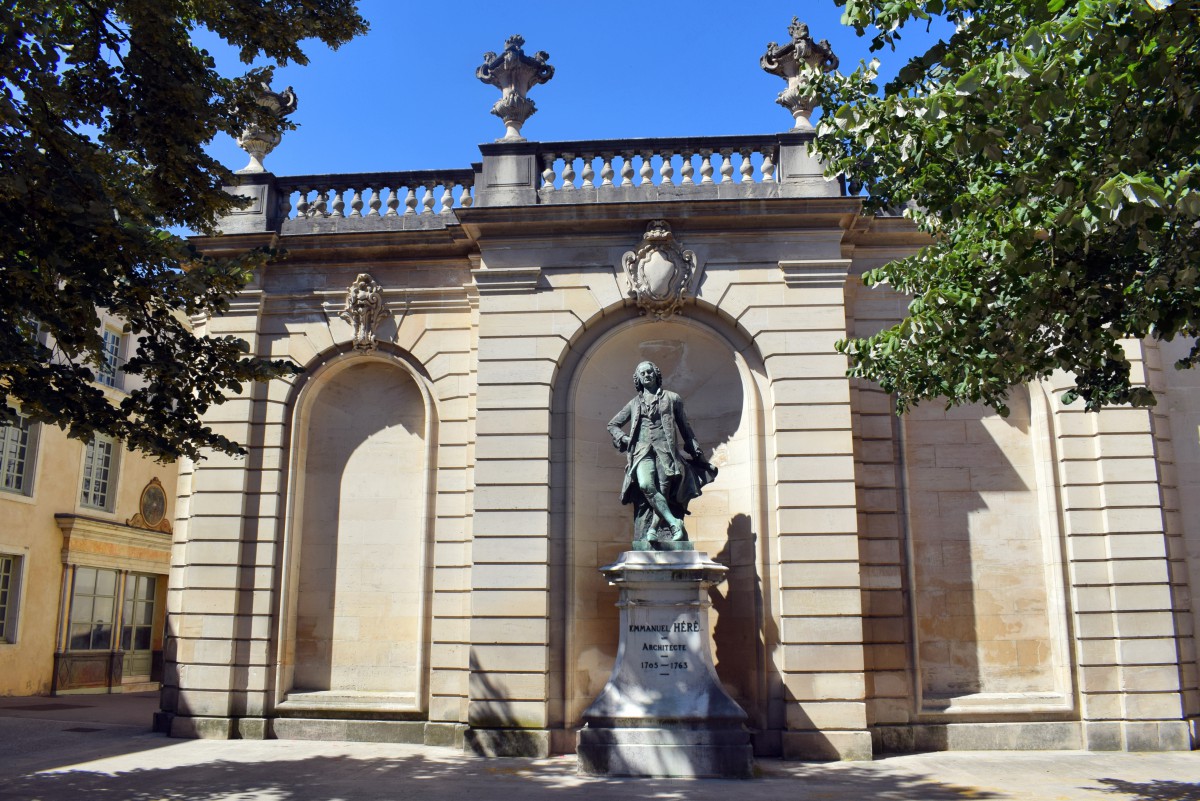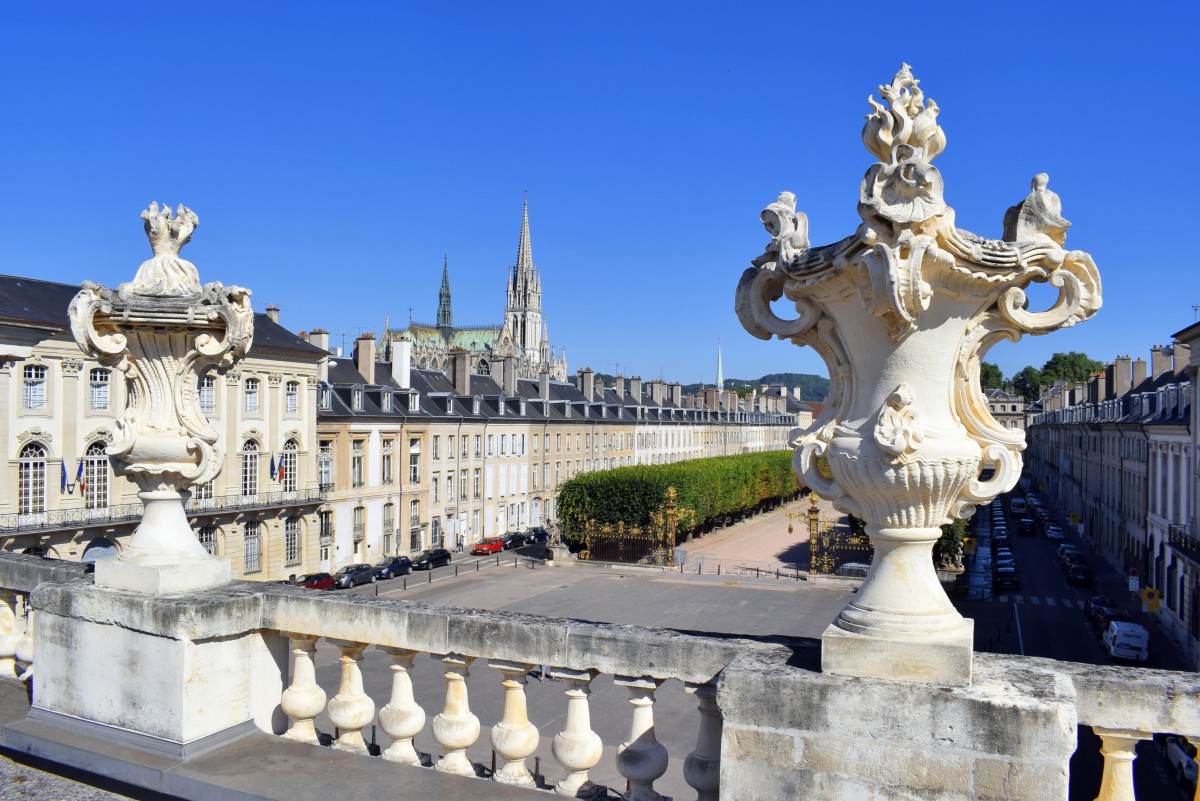You’ve certainly heard of Paris’ grand Arc de Triomphe. In the Lorraine city of Nancy is another triumphal arch worth mentioning. It might be much smaller that the Parisian monument. Nevertheless the Arc Héré in Nancy is an architectural gem reminiscent of the antique triumphal arches built by the Romans. It connects two of the cities’ most beautiful squares: Place Stanislas and Place de la Carrière. Let me show you around…
The Arc Héré: the origins

The Arc Héré stands between Place Stanislas and Place de la Carrière. It is an integral part of the beautiful perspective created between the city-hall on the Place Stanislas and the Palais du Gouvernement, built to the North at the very end of the Place de la Carrière.
Originally a simple opening between the Old Town of Nancy (the Ville-Vieille) and the New Town (Ville Neuve) built by duke Charles III, this gate was flanked by two military bastions, bearing the names of Haussonville and Vaudémont.
The gate was dismantled in 1752 by Stanislas to make way for a triumphal arch. Construction of the arch took two years, from 1753 to 1755. The monument was designed by architect Emmanuel Héré to honour King Louis XV. The French architect modelled it on the Arch of Septimius Severus in Rome. It is also known as “Arc Héré” in honour to its designer.
Many ornamentations show the dedication of the monument to the French king: bas-reliefs, inscriptions…
The Arc Héré explained
The Arch is about 15 metres in height, 60 metres in width.
Stand in front of the monument from Place Stanislas to admire the façade.
The central archway, spanned by a semicircular vault, has smaller lateral openings to each side flanked by columns.

The left side is dedicated to Peace and the right side to War.
Above the archways, the attic is divided by corbels and contains three bas-reliefs:
- On the left Apollo and the Muses,
- in the centre Peace and War, and
- on the right Apollo fighting a dragon.
Apollo is an allegory of king Louis XV, depicted as a “magnificent and victorious prince”.
The cornice and the acroterion

On the cornice are statues that take up the theme of warfare: Ceres, Minerva, Heracles and Mars.
In the centre of the cornice stands an acroterion (an architectural ornament placed on a flat pedestal that takes here the form of a statue). On its face are the Latin inscriptions on black marble:
“HOSTIUM TERROR / FŒDERUM CULTOR / GENTISQUE DECUS ET AMOR”
(Terror of the enemies / treaties maker / glory and love from his people)
It supports the gilded group of the Fame by Barthélémy Guibal. To the left, Minerve is seen holding a medallion representing king Louis XV. To the right stands a personnification of Peace. Above them is Pheme/Fama, the Greek/Roman goddess of fame and renown who sets the trumpet to her mouth and holds a laurel wreath in her right hand.
The arch from Place de la Carrière
The face of the triumphal arch seen from Place de la Carrière is less decorated.
The entablature is replaced by an ornate stone balustrade.
The left side is dedicated to war (armours, arrowheads, banners) and the right side to peace (wheat ears, cornucopias).
The statues of Callot and Héré
The West and East facades are ornate with the statues of Jacques Callot (on the side of the Place Vaudémont) …

and Emmanuel Héré (on the side of the Pépinière). They are pastiches designed in 1887 and 1888.

A staircase in the West pier leads to the top of the monument (restricted access only).
More photos!
The triumphal arch and the two adjacent squares (along with the neighbouring Place d’Alliance) have all been listed on the World Heritage list of Unesco since 1983.
Check out the website of the Tourist Information Centre for more info about Nancy. Thank you Nancy Tourisme for opening the doors to this amazing monument! 😉
Did you like what you read? If so, please share this article on Facebook or twitter! 🙂
Pin it for later:





















